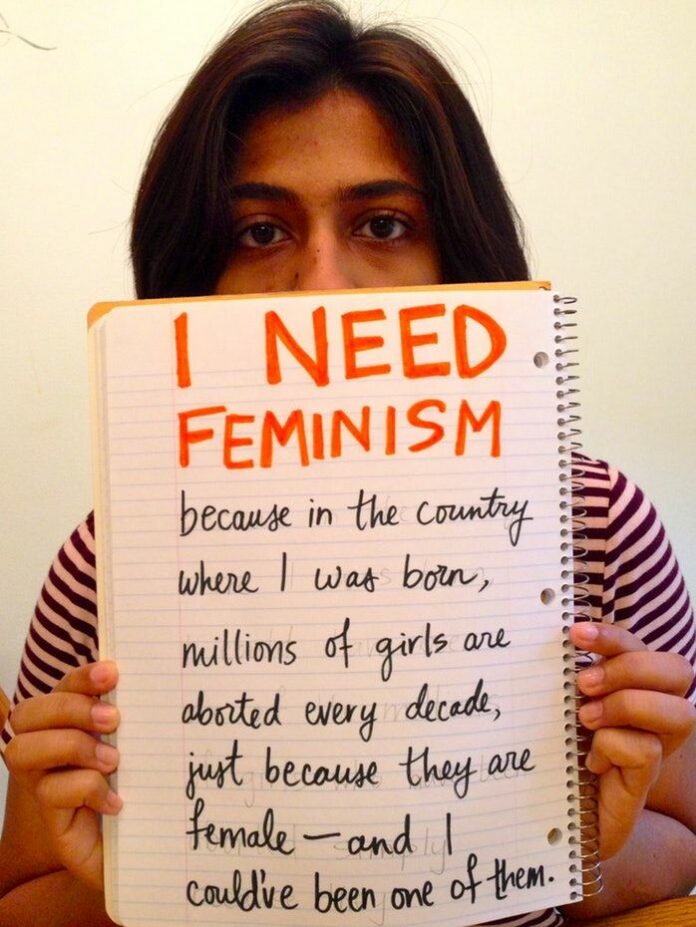Modern feminism, a multi-faceted and often polarizing discourse, emerges from a historical context rich with struggle and resilience. As we delve into its current manifestations, one must acknowledge the complexity inherent in this social movement. Feminism has evolved, intertwining with contemporary societal issues and offering diverse perspectives. This exploration aims to highlight the nuances of modern feminism, addressing various strands, criticism, and its role in fostering an equitable society.
Central to understanding modern feminism is recognizing its evolution through the waves of the feminist movement. Each wave has confronted distinctive issues pertinent to its time: from suffrage and property rights to sexual liberation and workplace equity. Today, we stand at the intersection of post-structuralism and intersectionality, widening the lens through which we confront gender issues. Modern feminism encompasses myriad paradigms, often categorized into liberal feminism, radical feminism, intersectional feminism, and eco-feminism, among others. This division highlights the pluralistic nature of feminist discourse while underscoring the discord within the movement itself.
The landscape of modern feminism is intricately woven with the principles of intersectionality, a term popularized by Kimberlé Crenshaw in the late 1980s. Intersectionality recognizes the interconnectedness of social identities—such as race, class, gender, sexuality, and ability—and how these intersections contribute to unique experiences of oppression and privilege. Advocates argue that ignoring these intersections results in a monolithic understanding of gender politics that fails to address the lived realities of diverse individuals. As a result, intersectional feminism seeks to illuminate the manifold dimensions of inequality, urging a more inclusive approach that encapsulates the experiences of women of color, LGBTQ+ populations, and economically marginalized groups.
However, the incorporation of intersectionality into feminist discourse has not come without contention. Critics argue that the increasing complexity of feminist debates risks diluting the movement’s focus. Some contend that the expansive categorization may lead to fragmentation and ideological schisms, risking the solidarity necessary for effective activism. Such critiques raise essential questions: To what extent should feminist movements accommodate diverse voices without compromising their core objectives? Can a unifying feminist agenda coexist alongside the multiplicity of experiences that characterize modern feminism?
Moreover, the rise of digital feminist activism has transformed the methods of engagement and activism. Social media platforms serve as amplifiers for feminist voices, allowing for grassroots mobilization and the dissemination of information at an unprecedented pace. Movements such as #MeToo and #TimesUp have harnessed this digital landscape to challenge patriarchal norms and demand accountability for gender-based violence. These hashtags have catalyzed widespread conversations about consent, harassment, and systemic injustice, highlighting the collective power of women to assert their agency.
Despite its successes, the digital sphere has also spawned challenges, including the potential for performative activism. This phenomenon, characterized by surface-level engagement with social justice issues, raises crucial ethical considerations. Do individuals who share a post or participate in online discussions engage meaningfully with feminist principles, or is their involvement merely performative? As the feminist landscape expands into the digital realm, ensuring that activism translates into tangible change remains a pressing concern.
Moving beyond the digital sphere, discussions surrounding the commodification of feminism warrant scrutiny. The phenomenon of “girl power” slogans and feminist merchandise may promote consumerism rather than substantive social change. As corporations adopt feminist rhetoric for marketing purposes, the question arises: Is this an instance of authentic allyship, or is it a co-optation of feminist ideals for profit? The potential erosion of feminism into a marketing tool poses a significant threat to its principles and objectives. Engaging critically with the commercial dimensions of feminism requires discernment to distinguish genuine advocacy from superficial appropriation.
Another pivotal aspect of modern feminism is the consideration of male allyship. Engaging men in feminist conversations is essential for dismantling patriarchal structures that perpetuate gender inequality. The involvement of men as allies can foster collaborative efforts to address societal norms that underlie misogyny and discrimination. However, the challenge lies in ensuring that male allyship does not center male voices at the expense of women’s narratives. Effective allyship necessitates humility, active listening, and the willingness to confront one’s privilege.
Additionally, modern feminism must grapple with the global context in which it exists. Feminist movements are not homogenous; they are shaped by cultural, economic, and political factors unique to each region. In many parts of the world, women continue to face egregious human rights violations, including gender-based violence, limited access to education, and inadequate healthcare. The globalization of feminist discourse necessitates cross-cultural solidarity and the recognition of diverse struggles. Upholding a transnational perspective enriches the feminist movement and emphasizes the importance of global alliances to combat women’s oppression across borders.
Finally, the role of education in advancing feminist ideals cannot be overstated. Feminism equips individuals with analytical tools to deconstruct patriarchal ideologies and engage critically with societal norms. Educational institutions are pivotal arenas for feminist discourse, empowering students to question inequitable structures and advocate for change. Integrating feminist theory into curricula fosters a generation of informed individuals capable of challenging systemic injustices.
In conclusion, modern feminism remains a dynamic and evolving discourse, reflecting the complexities of contemporary society. While it grapples with intramovement tensions and external challenges, it is crucial to recognize the transformative potential it holds. The incorporation of intersectionality, the rise of digital activism, and the necessity of global solidarity underscore the importance of a nuanced feminist perspective. As pathways toward equality continue to unfold, a commitment to inclusivity, critical engagement, and educational empowerment will be essential in shaping the future of modern feminism. Liberation is not merely a personal struggle; it necessitates collective action, solidarity, and a relentless drive to confront systemic oppression in all its forms.





























